A valve is a mechanical device utilized in fluid systems to manage, guide, separate, blend, or adjust a fluid’s flow or pressure by altering the pathway within the pipe. In the open position, the path is clear, enabling fluid to move from areas of higher pressure to lower pressure. Flow can be minimized or halted altogether by partly or entirely blocking the pathway through the valve.
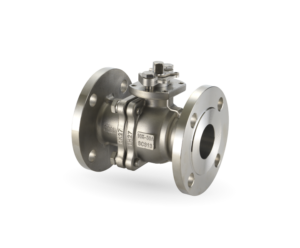 Ball Valve
Ball Valve
A ball valve utilizes a hollow ball that rotates within the valve body to control flow. A simple quarter-turn of the handle aligns the ball’s internal passageway/bore with the flow path for open operation or positions it vertically to create a tight seal when closed. Ball valves are known for their quick operation, excellent shutoff capabilities, and versatility across various industries and applications. Conversely, ball valves are hard to clean, increasing the risk of contamination. Moreover, they are not ideal for applications requiring continuous throttling.
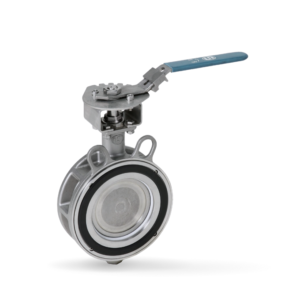 Butterfly Valve
Butterfly Valve
A butterfly valve uses a circular disc that rotates within its body to regulate flow. The disc sits vertical to the flow path when closed, creating a seal, and rotates parallel to it when open, allowing flow with minimal obstruction. Butterfly valves are recognized for their space-saving, lightweight design and suitability for handling large flows. However, butterfly valves might be tough to clean, and their throttling ability is limited to low-pressure differences.
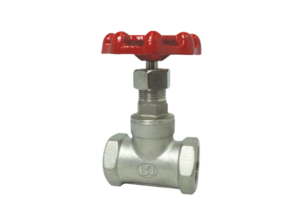 Globe Valve
Globe Valve
A globe valve features a spherical body with a movable plug and stationary seat, allowing for start/stop functions and flow regulation. Commonly used in systems requiring precise flow control and leak prevention, such as cooling water and chemical feed systems. Compared to gate valves, globe valves offer superior shut off and throttling control. However, they incur higher costs and induce pressure loss and turbulence due to fluid direction changes. Their weightiness and unsuitability for fluids with particles or high viscosity limit their application. They are preferred in systems prioritizing flow control and leak prevention, where pressure drop is not a major concern, such as steam systems and chemical processes.
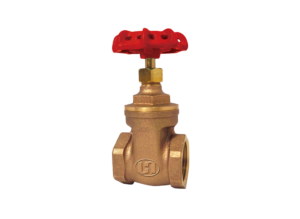 Gate Valve
Gate Valve
Gate valves are prevalent in process plants, characterized by a closing gate moving linearly to regulate fluid flow. Offering reliable shutoff, they are versatile, and suitable for various fluid services, including air, fuel gas, feedwater, steam, slurries, and viscous liquids. Inexpensive and easy to maintain, gate valves provide low fluid resistance with a straight path facilitating uninterrupted flow. However, their design limits them to fully open or fully closed positions, rendering them unsuitable for throttling applications. Additionally, the fluid’s impact on a partially open gate can damage the valve, and their multi-turn operation makes them unsuitable for rapid operations.
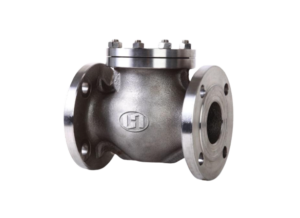 Check Valve
Check Valve
A check valve aims to prevent backflow in piping systems, operating based on fluid pressure. It opens when fluid flows through the pipeline, while reverse flow prompts closure to block fluid movement in the opposite direction. Check valves function automatically without the need for external control, lacking operating handles or stems. They commonly feature a one-way flap mechanism and are characterized by their small size, simplicity, and affordability. Check valves are used in feed water control, gas mixing, and fuel and oxidizer mixing systems.
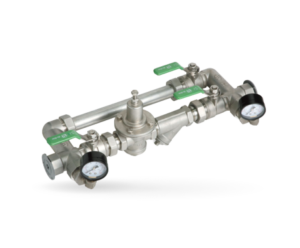 Pressure Reducing Valve
Pressure Reducing Valve
A pressure-educing valve operates autonomously to regulate downstream or upstream pressure, primarily converting higher pressure to a lower one. Widely utilized across the water, steam, and oil and gas industries, these control valves balance steam pressure using a spring mechanism in steam systems. They come in two main types: pilot-operated pressure-reducing control valves and direct-acting pressure-reducing valves.
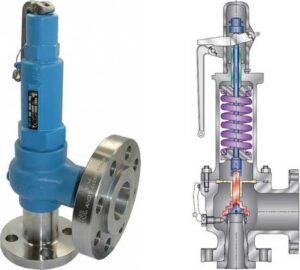 Pressure Relief Valve
Pressure Relief Valve
A pressure Relief Valve is a crucial safety measure, safeguarding pressurized vessels or systems from potential overpressure events that could compromise safety and property. Such events occur when pressure exceeds the specified design or maximum allowable working pressure. The primary function of a pressure Relief Valve is to release fluid from the overpressurized vessel, mitigating the risk of catastrophic failure and ensuring the protection of life and assets.
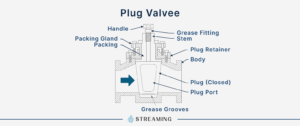 Plug Valve
Plug Valve
Plug valves utilize a cylindrical or conically tapered plug to regulate fluid flow by aligning or obstructing fluid passages within the valve. A quarter-turn rotary motion is employed to block fluid flow, with the plug’s design effectively preventing the accumulation of suspended particles in slurry applications. Commonly used in gaseous, vapor, natural gas, oil, coal, mineral, sewage, vacuum, and high-pressure systems, plug valves demonstrate durability and reliability, particularly in handling corrosive, abrasive, and toxic materials. However, plug valves are unsuitable for throttling applications and high-frequency switching, requiring greater actuation force and incurring higher costs compared to ball valves due to increased friction.
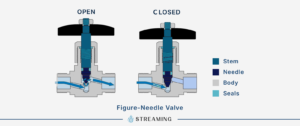 Needle Valve
Needle Valve
Needle valves are similar to globe valves. It features a long, tapered plunger resembling a needle, which fits into a matching seat to control flow. These valves precisely regulate flow rates by turning a stem to insert or retract the plunger. Their finely threaded stem requires multiple turns for full retraction. They are primarily utilized in small-diameter piping systems requiring meticulous flow control. However, their suitability is limited to low flow rates and clean fluids, as excessive force during shut-off can damage the valve seat.
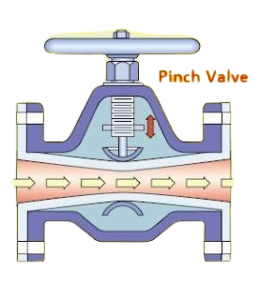 Pinch Valve
Pinch Valve
Pinch valves function by using an elastic tubing and a pinching device to directly control flow through the tubing, with the pinching mechanism flattening the tubing to create a seal. These valves start, stop, and regulate fluid flow, offering simplicity, affordability, and enhanced leak-proofing due to their fewer components. However, pinch valves are unsuitable for gases or high-temperature or high-pressure environments, as the tubing may collapse or deform under high-pressure differentials or vacuum conditions, leading to incomplete valve opening.
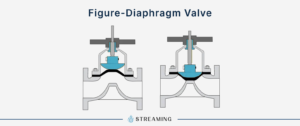 Diaphragm Valve
Diaphragm Valve
A diaphragm valve, also known as a membrane valve, features an elastomeric diaphragm sealing against a saddle/seat. It’s operated by a linear compressor to close, allowing for partial closure for throttling. Diaphragm valves are leak-proof and easy to maintain. They are commonly used in water treatment facilities, pharmaceuticals, food, and chemical plants, as well as in vacuum services and corrosive environments. However, continuous throttling can lead to diaphragm wear over time, and the saddle design may hinder complete pipe drainage.
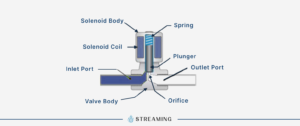 Solenoid Valve
Solenoid Valve
A solenoid valve, an electrically operated valve, regulates the flow of media through it. It functions on the principle of a plunger moved by the magnetic field created by the electrical solenoid, opening or closing an orifice for media flow. With various circuit functions, designs, and construction materials, solenoid valves are tailored for specific applications and can be controlled remotely and automatically. They find extensive use across industries such as water treatment, automotive, and food processing.
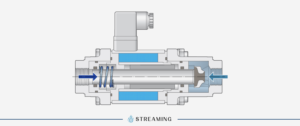 Coaxial Valve
Coaxial Valve
A coaxial valve operates using an internal hollow tube that can shift sideways to control or redirect the media flow. Typically crafted from 316 stainless steel for superior corrosion and wear resistance, this internal tube accommodates various media types, from inert to aggressive or corrosive substances. O-ring seals of PTFE, NBR, EPDM, or FKM secure the coaxial tube, enabling lateral movement while ensuring the media doesn’t contact internal valve components.
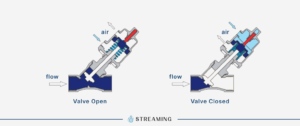 Angle Seat Valve
Angle Seat Valve
Angle seat valves, or angle body piston valves, are pneumatically actuated piston valves that regulate various fluids and gases. Their angled seat design minimizes flow impedance, ensuring high flow rates and low-pressure loss when open. These valves are robust and have long cycle lives, making them durable alternatives to ball valves, especially in harsh environments or with contaminated media. They can handle high temperatures, viscosity, and zero differential pressures. Available in single-acting or double-acting configurations, they may be manually or electrically operated, focusing on pneumatic angle valves.
ref : https://www.twstreaming.com/different-types-of-valves.html

